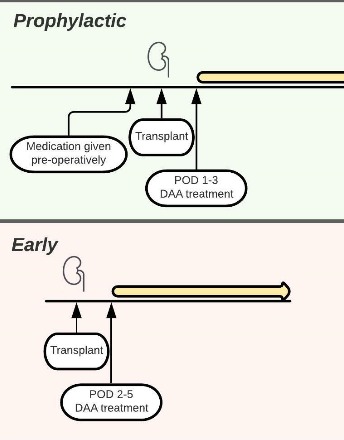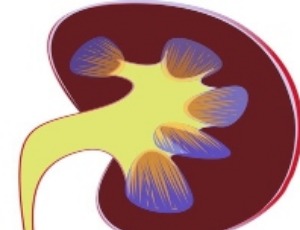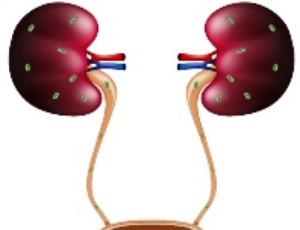Loading
Archives of Nephrology and Renal Studies
ISSN: 2771-1889

2022
Volume 2, Issue 1, p1-16
Articles published in this issue are Open Access and licensed under Creative Commons Attribution License (CC BY NC) where the readers can reuse, download, distribute the article in whole or part by mentioning proper credits to the authors.
The RiVUR Study Outcomes and Implications on the Management of Vesicoureteral Reflux
Tiffany Damm, Ranjiv Mathews
The Randomized intervention for Vesicoureteral Reflux (RiVUR) study was an effort by the National Institute of Health to identify the most significant question on the management of vesicoureteral reflux (VUR), i.e. Did antibiotic prophylaxis reduce the incidence of recurrent urinary tract infections (UTI) in children with VUR? During the initial phases of the RiVUR study, several similar studies were performed that seemed to indicate lack of benefit of antibiotic prophylaxis in VUR.
Arch Nephrol Ren Stud, 2022, Volume 2, Issue 1, p1-5 | DOI: 10.33696/nephrology.2.006
Peritoneal Imaging may be the Last Piece of the Puzzle for Precision Evaluation of Peritoneal Function
Xiangwen Diao, Xiao Yang
Due to changes in end-stage renal disease (ESRD) policies in many countries and the impact of COVID-19, the importance and demand for peritoneal dialysis (PD) as a home dialysis treatment modality is growing prominently [1]. However, peritoneal membrane dysfunction remains a bottleneck restricting the application of PD. Therefore, there is an urgent need to develop new methods to accurately assess peritoneal function.
Arch Nephrol Ren Stud, 2022, Volume 2, Issue 1, p6-8 | DOI: 10.33696/nephrology.2.007
Review of Renal Transplantation of Hepatitis C Viremic Donor Organs into Aviremic Recipients
Jiawei Cui, Roman Perri
The development of direct-acting antiviral agents for the treatment of Hepatitis C (HCV) has changed the practice of treating patients with HCV. In particular, organ transplant recipients who have not previously been exposed to HCV are now able to consider receiving an organ from a donor who is infected with HCV, and anticipate effective antiviral therapy after transplantation.
Arch Nephrol Ren Stud, 2022, Volume 2, Issue 1, p9-16 | DOI: 10.33696/nephrology.2.008
Recommended Articles
COVID-19 Clinical Research
While the global COVID-19 pandemic has challenged the entire humanity and health systems, it also triggered researchers to urgently perform clinical trials to assess the safety and efficacy of many agents and modalities to combat COVID-19. As of April 22, over 650 clinical studies have been registered both in USA and internationally. Results from these studies are also coming at a brisk pace in this unprecedented emergency.
Therapeutic Values of Ketamine for COVID-19-Cared Patients: An Expert’s Point of View
Ketamine has long been used in the field of anesthesia [1]. Its rapid and long-acting analgesic effects associated with its dissociative properties have also established its use in prehospital and emergency department patients.
A Bioinformatics Protocol for Rational Design of Peptide Vaccines and the COVID-19 Rampage
The currently ongoing coronavirus pandemic, the SARSCOV- 2, interchangeably referred to as the COVID-19 infection, has in a short span of time altered the ways and means of almost all of mankind. So strong has been its effect that all human activity ceased in one way or another for a considerable time, led to significant loss of life and economic drain of.
Lessons Learnt from COVID-19: How Can We Prepare for Another Pandemic?
Five months into the COVID-19 pandemic, the U.S. death toll from the virus has now surpassed 100,000 people. Many more cases remain nationwide, while an unknown number of patients currently harbor the virus asymptomatically. While health officials are now optimistic regarding the decline in prevalence and number of deaths due to COVID-19 and the possibility of a vaccine by the fall, we cannot lose sight of the bigger picture: the next pandemic.
Safety of Using Rituximab Therapy During COVID-19 Pandemic
Rituximab is a chimeric (20% rodent and 80% human) monoclonal antibody that binds to the CD20 antigen present on the cell surface and leads to depletion of mature B-cells [1,2]. It is the first approved monoclonal antibody to be used in the therapy of indolent B-cell non- Hodgkin’s lymphoma and chronic lymphocytic leukemia
Educators as Essential Workers in the Era of COVID-19: Applying Lessons from Disaster Recovery
In the article, “Mental Health Framework: Coronavirus pandemic in post-Katrina New Orleans” [1], Shervington and Richardson offer recommendations about how to anticipate and address disaster-related, trauma exposures associated with the coronavirus pandemic
How Well Do Hemodialysis Patients Respond to the BNT162b2 mRNA COVID-19 Vaccine?
In January 2020, the World Health Organization (WHO) classified COVID-19 to be a Public Health Emergency of International Concern and declared it a pandemic on March 11, 2020 [1]. Over one hundred and eighty-five million people have been infected by SARS-CoV-2 and roughly four million have died worldwide so far
Predicting COVID-19 Hospitalized Patients’ Outcome with Homocysteine
The COVID-19 pandemic has provoked a global, rapid increase of cases due to the high infectivity of the etiological agent, COVID-19 virus. In February 2021, over 110 million confirmed COVID-19 cases with 1 million deaths were reported worldwide (www.who.int).
Dexamethasone: The First Drug to be Shown to Decrease Mortality in Critically Ill Patients with COVID-19
The precise role of corticosteroids for treatment of coronavirus disease 2019 (COVID-19) is unclear due to lack of randomized trials.
How to Prevent Rehospitalization in Patients with COVID-19
Since December 2019, Severe Acute Respiratory Syndrome Coronavirus 2 (SARS-CoV-2) caused by 2019 Novel Coronavirus (2019-nCoV) has resulted in 89,000 cases of Corona Virus Disease 2019 (COVID-19), formerly known as Novel Coronavirus Pneumonia (NCP) in China, including 2,450 deaths.
Classical Drug and its New Role in COVID-19 Management
COVID-19 is the new emerging viral infection that already cause global public health problem [1-3]. More than 220 countries/territories are already attacked and there are more than 17 million patients around the world
Preparing for a More Public Health-Aware Practice of Medicine in Response to COVID-19
After one year in a pandemic, we mourn the loss of over half a million lives in the United States, and over four million worldwide, and remain concerned over the challenges facing the families of 35 million people in the United States, and 200 million worldwide, who have suffered from cases of COVID-19.
Quantifying Respiratory Airborne Particle Dispersion Control Through Improvised Reusable Masks: The Physics of Non-Pharmaceutical Interventions for Reducing SARS-CoV-2 (COVID-19) Airborne Transmission
In light of the current pandemic from rapid transmission of the severe acute respiratory syndrome coronavirus 2 (SARS-CoV-2 or COVID-19) and significant morbidity, there has been inconsistent medical guidance given to the public regarding the wearing of non-medical improvised fabric masks or face coverings to reduce the transmission of COVID-19.
The Use of Hydroxychloroquine and Interferons for the Prophylaxis of COVID-19
At the beginning of Covid-19 pandemic, we proposed to use hydroxychloroquine (HCQ) and intranasal interferon (IFN) a-2b spray to prevent SARS-CoV-2.
Rehabilitation Providers’ Experiences with Rapid Telerehabilitation Implementation During the COVID-19 Pandemic in the United States
Telehealth has been around since the 1960s as a healthcare delivery modality, though it did not gain widespread acceptance as a viable and reliable clinical tool until the late 1990s, when digital imaging and high speed, high bandwidth telecommunications technology became widely available [1]. Historical boundaries to its acceptance and
COVID-19 Disease and SARS-CoV-2 Vaccination in Patients with Cancer
Since the declaration of COVID-19 as a pandemic in March 2020 [1], there have been more than 100 million reported cases of COVID-19 worldwide and more than 2.1 million deaths [2].
COVID-19 and the Health of Illicit Substance Users: Preliminary Analysis from Illicit Drug Transaction Data
While much attention has been given to how COVID-19 patients are treated (or fail to be treated), the impact of the pandemic on illicit drug users remains largely undiscussed
Gastrointestinal Manifestations of COVID-19: An Overview
The Coronavirus disease 2019 (COVID-19) is an infectious disease caused by the new coronavirus of severe acute respiratory syndrome 2 (SARS-CoV-2), single-stranded, positive sense, spherical RNA virus with spikes protein that protrude on its surface giving the appearance of a crown, from the Latin corona. It belongs to the large family of coronaviruses (CoVs) and the genus β-coronavirus. COVID-19 can involve manifestations in the respiratory system, as well as other biological systems, as a intestinal.
COVID-19 Rapid Diagnostic Test Results and their Associations with Certain Factors Among the Residents of Balochistan
This paper analyses any possible association of various factors like gender, last COVID-19 PCR test results, BCG Vaccination, Seasonal Flu vaccination, occupation and confirmed case contact history with COVID-19 RDT results of the participants.
Remdesivir in COVID-19 Patients with End Stage Renal Disease on Hemodialysis
COVID-19, a global pandemic caused by severe acute respiratory syndrome-coronavirus 2 (SARS-CoV2) has resulted in hospitalization in many cases.
About Scientific Archives
Scientific Archives is a global publisher initiated with the mission of ensuring equal opportunity for accessing science to research community all over the world. Spreading research findings with great relevance to all channels without any barrier is our goal. We want to overcome the challenges of Open Access with ensured quality and transparency.
